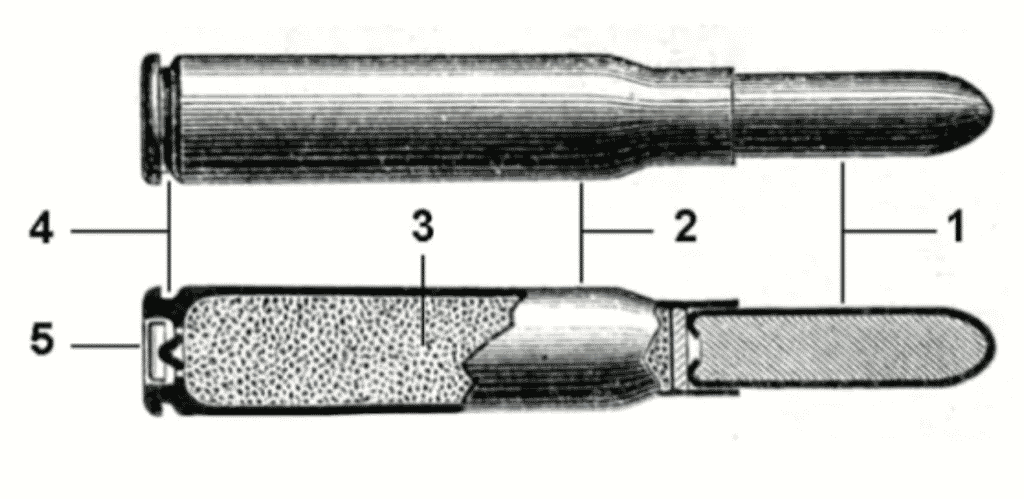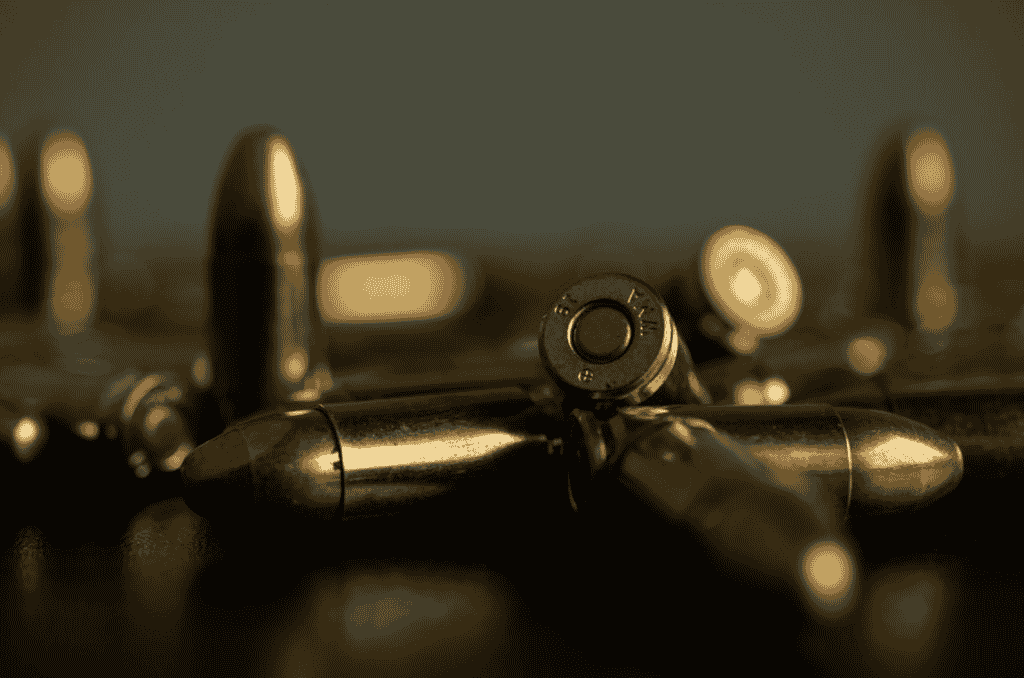Knowing the difference between blanks and live ammunition is very important for preventing unwanted scenarios.
A recent incident with a prop gun involving actor Alec Baldwin and the accidental death of Holywood director of photography Halyna Hitchins, proved that fatal accidents could happen even in a controlled environment.
To understand the difference between blanks and live ammunition, we must answer some basic questions.
1. How does the live ammunition work?
2. What are the types of live ammunition?
3. How does blank ammunition work?
4. What are the types of blank bullets?
5. What are the purposes of a blank bullet?
6. Are blank bullets dangerous?
7. What is the difference between blanks and live ammunition?
1. How does the live ammunition work?
To understand how live ammunition works, we need to differentiate a bullet from a cartridge.

A bullet is a piece of metal that flies out of the weapon’s barrel. In the image above, a bullet is labeled with the number 1. It typically contains a lead core wrapped in the harder metal case.
A shell is labeled with the number 2 and it is usually a casing filled with gunpowder (3) or a similar explosive substance.
When you pull the gun’s trigger, a firing pin hits the primer (5), which causes the powder to ignite. As the powder burns, it swiftly releases gasses that accumulate enough force to fire the bullet out of the cartridge and through the gun barrel.
2. What are the types of live ammunition?
Live ammunition is any ammo that contains powder, primer, case, and a real bullet. It comes in many shapes and sizes and it is used for different purposes.
- Lead Round Nose
- Wad Cutter
- Semi Wad Cutter
- Semi-jacketed
- Soft Point
- Armor Piercing
- Semi-Jacketed Hollow Point
- Jacketed Hollow Point
And many more.
They also differentiate in calibers and the types of weapons for which they are being used.
Check this out if you need 2.62x51mm caliber bullets for your rifle.
3. How does blank ammunition work?
Instead of the bullet at the top of the shell, blanks have a wad made of paper, plastic, cotton, or felt.
Blank ammo works similar to live bullets, but their wedding doesn’t allow a gun powder to spread out. The result is a loud bang and a bright flash. No projectile should come out of the weapon barrel when blank ammo is fired.
4. What are the types of blank ammo?
Blank ammo comes in many shapes and sizes.
- 9mm blank pistol bullets
- Short 6mm blank bullets for revolvers
- 9mm blank bullets for revolvers
- 8mm blank bullets for pistol
- Blanks for shotguns
- .22 blank bullets
- Blank bullets with smoke
And many others.
Blanks, more or less, come in all calibers and forms of live ammunition.
5. What are the purposes of a blank bullet?
Blanks are commonly used in prop guns for shooting stimulation where there is no need for ballistic results.
Because they can provide flashes and sound effects, they are generally used in reenactments or for special effects in movies and theatre plays. They can also be used for combat training, signaling, funeral honors, or fun in general.
6. Are blank bullets dangerous?
Although blanks are typically used to create a flash and a loud bang, they can still inflict significant damage if the target is within a couple of feet range. There are several incidents recorded that resulted in fatal income.
In 1984., actor Jon-Erik Hexum died after he shot himself in the head with a .44 Magnum loaded with blanks. It was meant to be a joke, but the gun fired a wad of paper that shattered the actor’s skull by pushing a bone fragment into the center of his brain.
In 1993., actor Brandon Lee died after being hit with a .44 caliber slug on the set of “The Crow” movie. The gun was meant to be loaded with blanks, but the autopsy revealed a bullet lodged near his spine.
Nobody knew how the metal projectile came out when it was supposed to be a piece of soft wading.
So to answer the question in short – yes, blank bullets are dangerous and they should be handled with caution.
7. What is the difference between blanks and live ammunition?
Let’s start with the obvious question – do blank and live ammunition look the same? The short answer is yes.
Blanks are made to mimic the look of real ammunition as they are commonly used as movie props. They look and feel the same.
The main difference is in their damage power and purpose. Blank bullets don’t fire a projectile, while live ammunition does. Because in blanks, the deadly bullet point is replaced by cotton, paper wadding, plastic, or felt, they are less likely to cause any damage to the target if handled properly.
When blanks are fired, they recreate the sound of gunfire while the gunpowder combustion causes a muzzle to flash, but with less recoil power than the live ammunition.
Live ammunition can be used for gun range practicing, hunting, and combat but can not be used on movie or theatre sets, while the blanks are mostly used as props and shooting simulation.
Another difference is that blank ammo isn’t considered ammunition by the law. This means that you can legally buy it, but you can still get charged with a public disturbance if you fire it in public places.
Buying a gun that shoots blanks requires no licensing. But make sure you buy the one that can not be converted to fire live ammunition.
Conclusion
In the words of firearms dealer Bob Lesmeister: “Blanks aren’t toys. You have to remember that the force of the exploding gas is great enough to fire a bullet.”
Keep in mind that blanks are sometimes filled with more powder than the live ammunition to create a louder bang. This is why you must always put safety first and approach them with caution.
